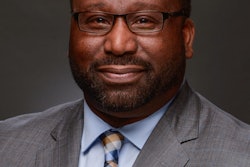WASHINGTON – Can American higher education regain its edge? A group of advocates, policymakers and scholars attempted to answer this question during a daylong forum hosted by the Washington-based American Enterprise Institute on Tuesday. Indeed, educators, employers and lawmaker have been in a bit of a panic since it’s been widely publicized that the U.S. has fallen behind many other OECD countries in producing college graduates. President Obama issued a challenge to dramatically increase the number of graduates by the end of the decade.
The first panel focused on where the nation stands and how to improve attainment rates. In a research paper titled “Increasing Higher Education Attainment in the United States: Challenges and Opportunities,” Arthur M. Hauptman, an independent public policy consultant, said that the nation needs to reassess recent efforts to increase college attainment and outlined some rules for doing so. They include setting more realistic goals for increasing the number of degrees and certificates, with a special emphasis on improving the quality of elementary and secondary education received by low-income and minority students and prioritizing certain fields of study. He also warned that too much focus on increasing the number and rate of degrees attained could inadvertently weaken the quality of credentials provided.
“We need to have a more honest discussion on the numbers and the policies that would get you to the numbers,” Hauptman told Diverse. “In terms of diversity, broad goals are not very helpful in terms of dealing with equity issues because they don’t differentiate by type of student.”
In a paper entitled “Graduation Rates at America’s Universities: What We Know and What We Need to Know,” Matthew Chingos, a fellow at the Brookings Institution and Harvard University, concluded that higher education institutions cannot reach Obama’s goal on their own. Students at all levels need to be better academically prepared so they can graduate from high school with the skills they need to enter college and successfully graduate. He also said that the research community could play a vital role in helping to identify promising strategies that would help colleges and universities achieve higher completion rates with their current students and evaluating their efforts.
“We don’t know a lot about what explains differences in graduation rates across different institutions. There are a few things that seem to matter: more financial aid for low-income students provided in a more simple, straightforward, easy to understand way,” said Chingos. “But we need to learn a lot more about what institutions can do to raise their graduation rates with the students they already have, not just by rejecting students who they think are underprepared.”
During his introduction of the second panel discussion was called “The Performance and Potential of Sub-baccalaureate Programs,” Mark Schneider, a visiting scholar at AEI and a vice president at the American Institutes for Research, told an amusing story about his admittedly snobbish response to the news that the son of a highly educated friend had decided to pursue a steam fitting apprenticeship while his own daughters sought advanced law and business degrees at prestigious universities. Today, however, he says, “The guy with the steamfitters card works all the time. And he’s out-earning both of my highly educated daughters.”
Brian Bosworth, founder and president of the public policy research firm FutureWorks, found in his research that the nation will not reach its postsecondary attainment goals unless a higher percentage of working adults and low-income and minority youth obtain credentials with labor market value. In addition, these two groups need to rapidly expand their achievement of non-degree credentials.
“This is feasible. There are good solid certificate programs out there that we can build on and we can achieve remarkable gains in a short period of time if we just put a little focus on expanding these programs,” Bosworth said.
Diane Auer Jones, vice president for external and regulatory affairs for the Career Education Corporation, called for greater investment in apprenticeship programs and dual-track programs that combine education and apprenticeships to help fill the gap in postsecondary credentials. “Everybody deserves an opportunity [to go to college], but I don’t think that everybody should go to college or have to go to college, and I certainly don’t think a focus on completion will allow us to achieve the goals that we all have in mind,” Jones said.
She recommended that the Labor Department’s Office of Apprenticeships provide greater oversight and develop national standards for curricula, performance and assessments. She also said that the federal government should market the benefits of apprenticeship training as aggressively as it does college access and completion and consider offering private sector firms tax incentives to participate in dual-track apprenticeship programs. In addition, she pointed out, it would be shortsighted to target only economically disadvantaged or low-achieving students for apprenticeship training because there are plenty of teenagers and adults from more affluent backgrounds who would prefer to work with their hands. Moreover, many of the positions projected are expected to have the fastest job growth over the next several years and do not require four-year degrees.
To read all of the papers presented and view a webcast of the event, click here.


















